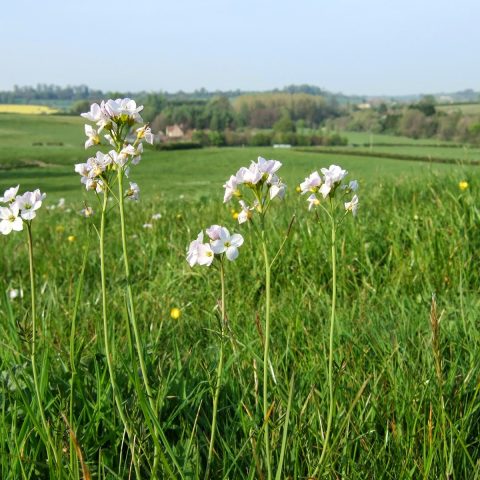Lennoxvale Tree Nursery's story
Lennoxvale Tree Nursery is the result of a shared vision between the three lead partners - Sans Souci Residents Association, Queen's University Belfast and The Conservation Volunteers. The concept had been discussed between QUB and SSRA. Its realisation is the result of a partnership of skills, capacity and enthusiasms. Its realisation was the result of a chance encounter between the three parties at the Green Flag award ceremony at Queen's in 2019. With its long history of restoring native woodland, TCV was the ideal partner to help establish a pop-up tree nursery and by October 2019, an initial agreement had been reached and site restoration commenced.
The Tree Nursery was created in a vacant section of Queen's property in South Belfast. The project has involved staff, students and local residents coming together to build the nursery beds, plant and maintain the seedlings. The first 2-year-old oak and bird cherry saplings will be transplanted in playing fields and students residences in South Belfast this year, contributing the citywide Belfast Million Trees program. Local Residents from the Sans Souci Residents Association are responsible for the management of the site over the course of the partnership agreement, with support from Queen's and TCVNI.
This community-led partnership transformed a littered, brownfield site into a thriving native tree nursery and a hub for regenerative projects in the wider area. By extending the adjacent green corridor from the River Lagan, and embedding green infrastructure along a main arterial route in South Belfast, the partners are realising a shared, long-term vision of green neighbourhoods. Every part of the site is carefully planned, with mature native trees, hedges and scrub alongside growing beds for locally collected native trees and a wildflower meadow. During 2021 Lennoxvale Tree Nursery was also the base for an ambitious, community and business-led landscaping project supported by Belfast City Council to help regenerate the Lower Malone Road. This has included the installation of mature trees and shrubs in containerised landscapes along the Lower Malone Road, providing mini parklets and outdoor congregation areas for the University community and local businesses.
Looking to the future, Lennoxvale Tree Nursery has highlighted the importance of the green corridor between the busy main arterial route of the Malone Road, and the River Lagan. In some areas, that corridor includes untouched woodlands and glens which are not easily accessible and which provide a much-needed hidden habitat for urban wildlife. While these areas should be conserved, the parties hope that trees from the nursery will be planted in other, more accessible sites accessible and which provide a much-needed hidden habitat for urban wildlife. These trees - oak, bird cherry birch and spindle - will in future increase biodiversity and help provide a permanent green oasis for the people of Belfast.
Useful learnings from Lennoxvale Tree Nursery
It's good to talk! - this project started as a chance conversation with a local resident, one of the team from The Conservation Volunteers and our gardening team.
Sustainability and acting for the environment are a common ground for the community to come together from a wide range of backgrounds.
Working with a mix of partners can be immensely beneficial - bring together a blend of skill sets.
Long-term programme legacy and impact can be achieved by connecting with city and regional environmental strategies and campaigns.
Build trust and open communication among key partners. Actively seek the right mix of skills and attributes among the partners.
Look for mutual benefit, but be prepared to listen and to compromise.
Keep talking and persist - maintaining the project will always entail hard slog as well as rewards.
Enthuse volunteers, share ownership, work to ensure succcession.
Lennoxvale Tree Nursery's metrics
Number of volunteer hours per year (over 1,000).
Number of healthy native saplings ready for planting (450).
Number of native trees from the project transferred each year, locally, to grow on to maturity (for at least 30 years).





